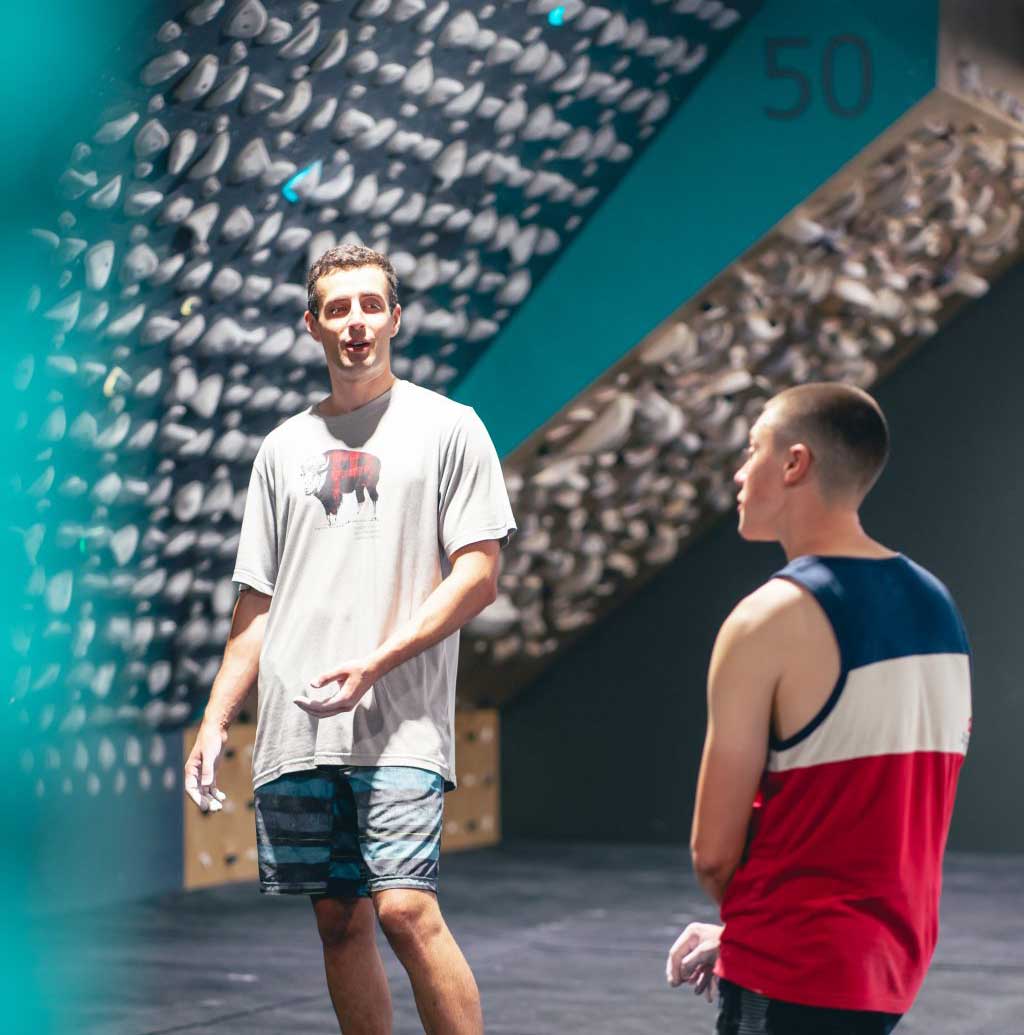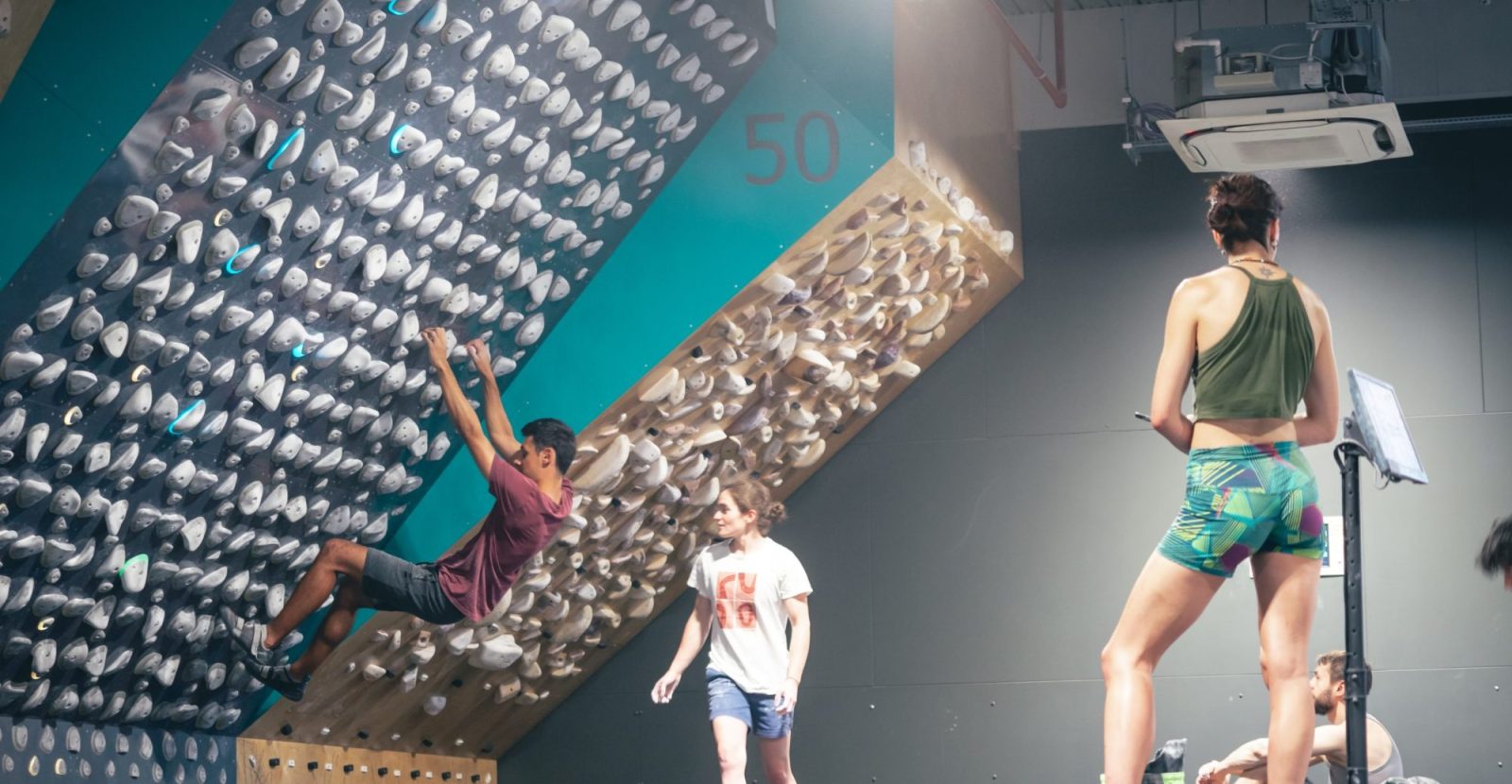The Kilter Board is one of the newest major players in the world of training boards. The texture of the Kilter holds are a midpoint between traditional resin and wood. This ensures that skin is never the limiting factor in your session, and their multiple and accommodating shapes means beginners can enjoy some board training. The combination of the holds allows you to train on open hand holds, incuts, pinches, crimps and slopers.
How it works
The LED light system will light up the holds that are going to lay out the problem. The layout of these holds it is standardised across the globe, allowing climbers to set and climb uniform problems no matter where they are on the planet!
How? Easy! Download the “Kilter Board” app for your smart device from the Apple App Store or Google Play and set it up with the following information:
- Create an account
- Add wall (Kilter Board)
- Choose your wall size: 12×12
- Adjustability: Set at 40 degrees
- Hold layout: – Custom – Kilter Board standard – Bolt-ons – Screw-ons
- Name your wall: Parthian Climbing Wandsworth

Benefits of training on the Kilter Board
The best part about training on a Kilter Board is that it never gets reset. You can project a particular problem for years, and it will always be available as long as you continue to have access to a Kilter Board. Using this board in your training can assist with three important components of climbing: power, core and finger strength.
- POWER: it’s obvious that power is an extremely important part of climbing, for bouldering and roped climbing; the routes that are set on the Kilter Board are intentionally extremely powerful.
- CORE: you can do as much core training off the wall as you want, but in the end, core workout on the wall is going to be much more beneficial for your climbing because it is sport specific. Having core strength is great, but you must know how to use it. Training on the Kilter Board is one of the best ways to work on core and overall body tension. The steeper terrain will force you to engage body tension, and with more practice, you will be able to use body tension on flatter surfaces as a result.
- FINGER STRENGTH: Kilter Board training can also have a huge benefit on finger strength and contact strength. The board has a large variety of crimps in its hold library, ranging from juggy crimps to tiny crimps. Due to the nature of the Kilter Board routes, requiring a lot of body tension and power, your fingers will benefit from dynamic moves to crimps, requiring a lot more finger strength than just hanging from a hold on a hangboard.
Dynamic Power
The Kilter Board can also be particularly effective for training dynamic power due to several key reasons:
- The diversity of the holds allows climbers to practice dynamic movements on different types of holds, helping them to develop strength and technique for various climbing scenarios.
- Climbers can set their own dynamic problems on the Kilter Board by arranging holds in specific configurations. This enables them to tailor their training to focus on specific dynamic movements they want to improve, whether it’s dynos, coordination moves, or dynamic movements between holds.
- Training dynamic power can be risky on outdoor routes, as falls during dynamic moves can lead to injuries. The Kilter Board provides a controlled indoor environment where climbers can practice dynamic movements safely and repeatedly.
- Dynamic climbing movements often require a combination of strength, coordination, balance and precision. Training on the Kilter Board can help climbers develop these skills, which can be beneficial not only for dynamic climbing but also for overall climbing performance.
This makes it an effective tool for climbers looking to improve their ability to execute dynamic movements, whether for bouldering, sport climbing or other forms of climbing.
Getting started on the Kilter Board
To truly advance using a board, starting conservatively is key. We are all capable of going hard during our sessions, but the real athlete understands that it’s the sum of many well-planned sessions that produces results. The way we get to that sum is not getting injured early on.
First time, your very first approach to this board should be “short and sweet”. Set a timer, stop after 30 minutes; rest as much as you need between problems. After a couple of rest days, go back, aim for 40 minutes, and stick to it. Gently work your way up to a reasonable-length session, around 60 to 75 minutes, and keep your goal in mind.
The training schedule should feature some heavy days, but also several medium and light days, too.
If your training goals are about power and strength gains, remember that long, tiring sessions are the enemy. If your goal is endurance, you should aim for a longer duration, but remember to hold back on the harder moves.
Take time off (a full week) from Board Training each month
This is probably the most difficult one. As with most great things, we need to be sensible, and look at the long-term gains. To avoid injuries, we need to remember that is the rapid change in intensity that blows tendons to pieces. The bones and connective tissues adapt slowly to loading. By taking a week off each month, we let these tissues rest and give them the chance to grow stronger.
If you would like some advice more specific to your own climbing, book onto one of our coaching clinics.
Written by Ilaria Campoli with contributions from Philip Li
